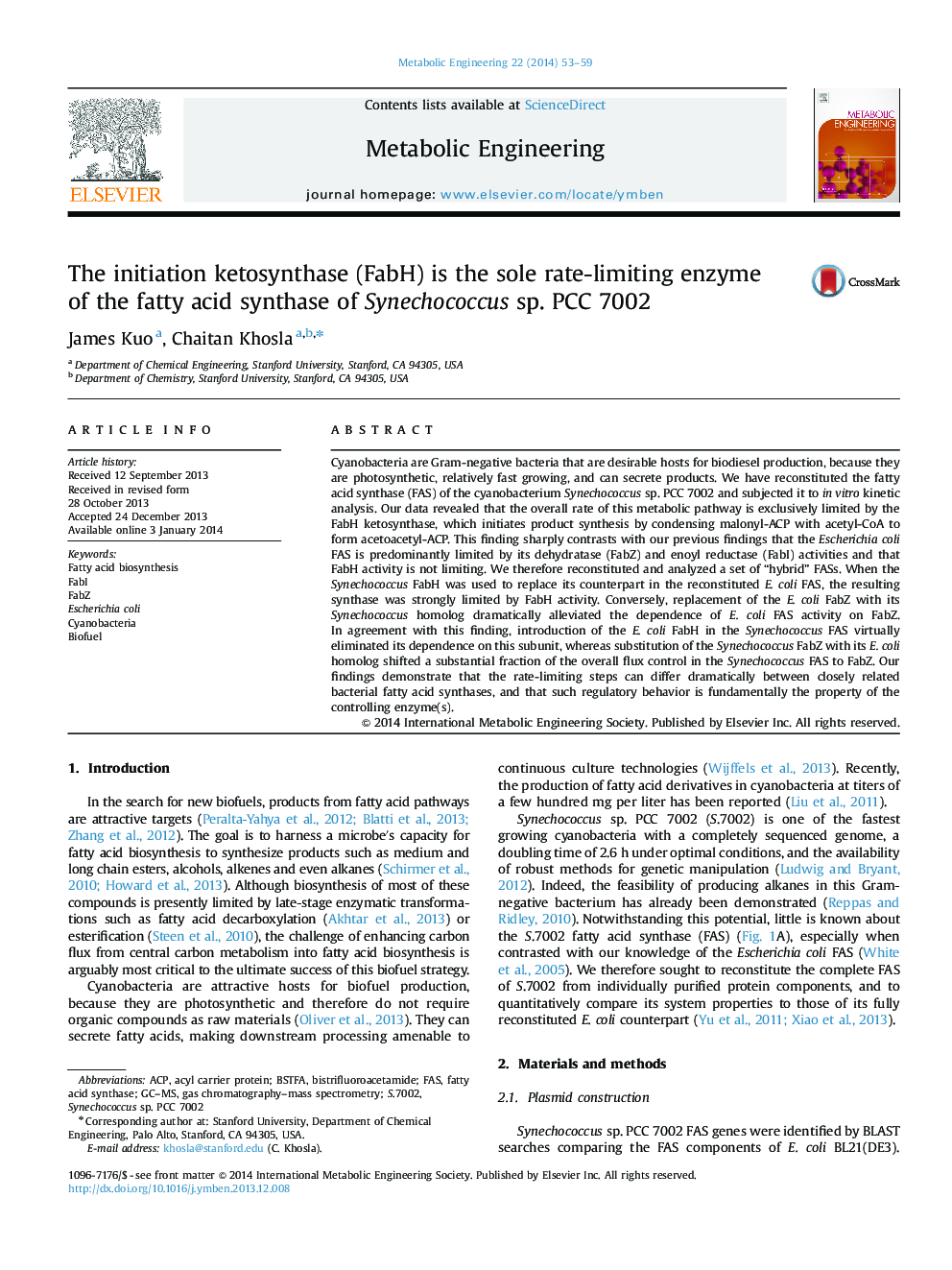| کد مقاله | کد نشریه | سال انتشار | مقاله انگلیسی | نسخه تمام متن |
|---|---|---|---|---|
| 6494622 | 44814 | 2014 | 7 صفحه PDF | دانلود رایگان |
عنوان انگلیسی مقاله ISI
The initiation ketosynthase (FabH) is the sole rate-limiting enzyme of the fatty acid synthase of Synechococcus sp. PCC 7002
دانلود مقاله + سفارش ترجمه
دانلود مقاله ISI انگلیسی
رایگان برای ایرانیان
کلمات کلیدی
FASACPBSTFASynechococcus sp. PCC 7002FabI - FABIGC–MS - GC-MSfatty acid synthase - اسید چرب سنتازEscherichia coli - اشریشیا کُلیFatty acid biosynthesis - بیوسنتز اسید چربBiofuel - سوخت های زیستیCyanobacteria - سیانوباکتریهاgas chromatography–mass spectrometry - طیف سنجی جرم کروماتوگرافی گازacyl carrier protein - پروتئین حامل آکیل
موضوعات مرتبط
مهندسی و علوم پایه
مهندسی شیمی
بیو مهندسی (مهندسی زیستی)
پیش نمایش صفحه اول مقاله

چکیده انگلیسی
Cyanobacteria are Gram-negative bacteria that are desirable hosts for biodiesel production, because they are photosynthetic, relatively fast growing, and can secrete products. We have reconstituted the fatty acid synthase (FAS) of the cyanobacterium Synechococcus sp. PCC 7002 and subjected it to in vitro kinetic analysis. Our data revealed that the overall rate of this metabolic pathway is exclusively limited by the FabH ketosynthase, which initiates product synthesis by condensing malonyl-ACP with acetyl-CoA to form acetoacetyl-ACP. This finding sharply contrasts with our previous findings that the Escherichia coli FAS is predominantly limited by its dehydratase (FabZ) and enoyl reductase (FabI) activities and that FabH activity is not limiting. We therefore reconstituted and analyzed a set of “hybrid” FASs. When the Synechococcus FabH was used to replace its counterpart in the reconstituted E. coli FAS, the resulting synthase was strongly limited by FabH activity. Conversely, replacement of the E. coli FabZ with its Synechococcus homolog dramatically alleviated the dependence of E. coli FAS activity on FabZ. In agreement with this finding, introduction of the E. coli FabH in the Synechococcus FAS virtually eliminated its dependence on this subunit, whereas substitution of the Synechococcus FabZ with its E. coli homolog shifted a substantial fraction of the overall flux control in the Synechococcus FAS to FabZ. Our findings demonstrate that the rate-limiting steps can differ dramatically between closely related bacterial fatty acid synthases, and that such regulatory behavior is fundamentally the property of the controlling enzyme(s).
ناشر
Database: Elsevier - ScienceDirect (ساینس دایرکت)
Journal: Metabolic Engineering - Volume 22, March 2014, Pages 53-59
Journal: Metabolic Engineering - Volume 22, March 2014, Pages 53-59
نویسندگان
James Kuo, Chaitan Khosla,